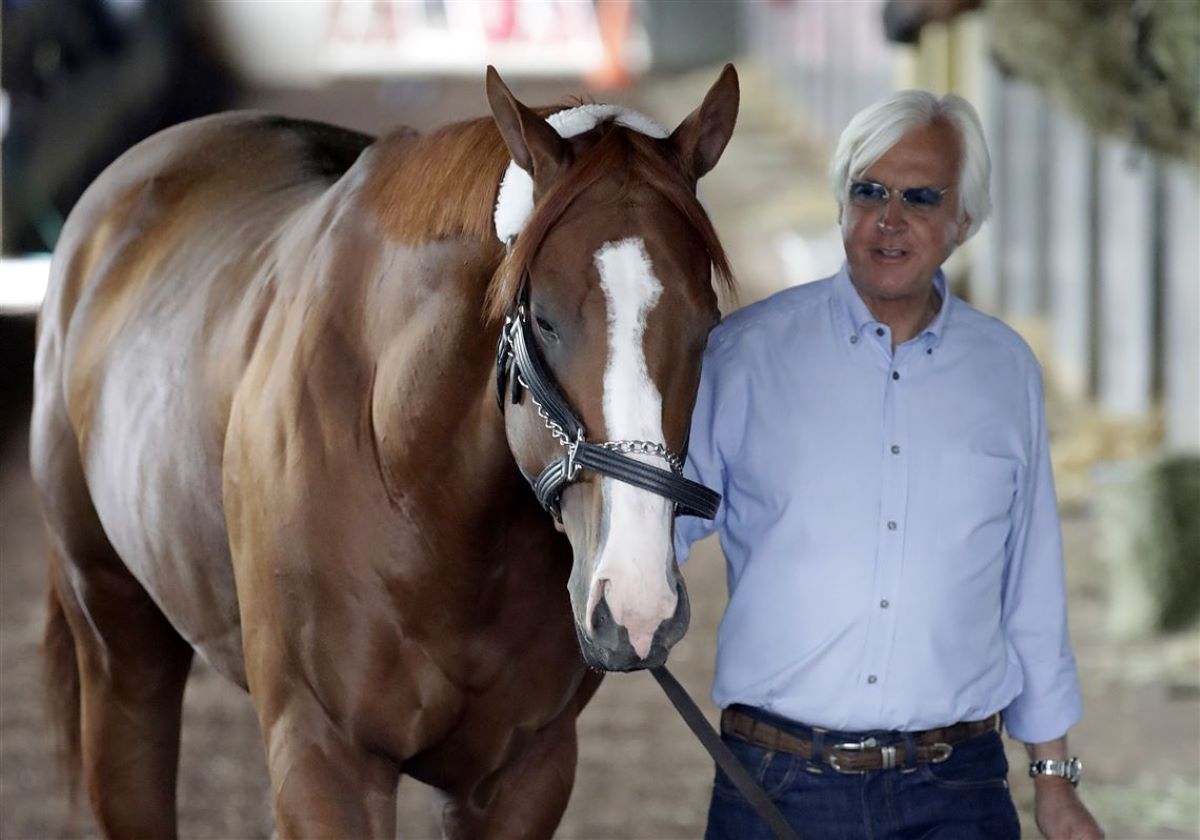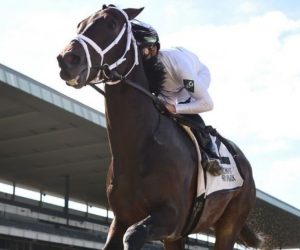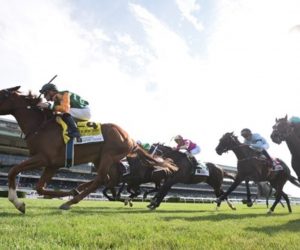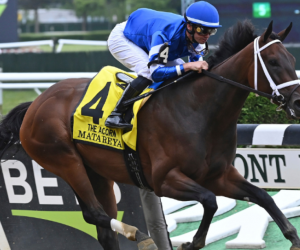More than a month after two of Hall of Fame trainer Bob Baffert’s star horses failed post-race drug tests at Oaklawn Park, the split samples of both tests both came back positive.

The “B” sample tests confirmed the initial findings that showed undefeated Charlatan and Gamine both tested positive for excessive amounts of Lidocaine, a pain medicine permitted in small doses. Tests showed Gamine had 185 picograms of Lidocaine and Charlatan 46 picograms.
A picogram is one-trillionth of a gram. Twenty picograms is the maximum allowed by the Racing Medication and Threshold Commission. The Arkansas Racing Commission follows those guidelines. That means Gamine possessed more than nine times the allowed limit of Lidocaine, and Charlatan more than twice the permitted total.
A common anesthetic, Lidocaine is classified as a Class 2 drug by the Association of Racing Commissioners International. It’s regulated because Lidocaine can be used as a masking agent to hide lameness in horses. It brings violators a 15-to-60-day suspension and fines of $500 to $1,000 for a first offense.
Baffert Plans to Fight Findings
Baffert said through his Kentucky-based lawyer, W. Craig Robertson III, that he will challenge the findings. Robertson issued a statement on behalf of the Hall of Fame trainer that maintained the horses received excessive doses of Lidocaine through one of Baffert’s barn employees. Robertson’s statement said the employee in question broke his pelvis and suffered from back pain.
According to that statement, the employee used a Salon Pas patch on his back for the pain. Robertson said in the statement that he believes Lidocaine from that patch went from the employee’s hands to the horses through the application of tongue ties to both horses.
“Even though Lidocaine is a lawful, widely available therapeutic medication, it was never intentionally administered to either Gamine or Charlatan,†Robertson’s statement read. “When test results indicated that trace amounts of Lidocaine were found in both horses after their respective races on May 2, Bob Baffert and his team were shocked. Leading up to May 2, both horses were healthy and worked hard to earn their victories that day.â€
Charlatan Put on Shelf With Injury
Charlatan’s positive test came after he dismantled the first division of the Arkansas Derby May 2. Gamine’s came the same day at the same track. She won an earlier allowance race on the Arkansas Derby undercard. Not long after The New York Times broke the story about the initial positives, Baffert pulled Charlatan off the Triple Crown trail with a minor ankle injury.
Gamine, meanwhile, went on to destroy the Grade 1 Acorn Stakes field at Belmont Park by nearly 19 lengths on June 20. She sits as the Kentucky Oaks favorite at +150 on MyBookie, 7/4 on Bet365, and at 3/2 at Ladbrokes. Baffert intimated she may run the Preakness Stakes on Oct. 3.
“It is our understanding that the trace amounts of Lidocaine found in both Gamine and Charlatan would not have had any effect on either horse – much less a performance enhancing one,†Robertson said. “The extreme sensitivity of modern day testing can now pick up trace levels of innocent contaminants that have no effect on a horse. This is an issue that regulators of horse racing need to account for and address.â€
If Arkansas Racing Commission officials disqualify Charlatan, he would forfeit the 100 points earned for winning that race, along with any prize money. Churchill Downs officials would then reallocate the points to the next four finishers. That means runner-up Basin would receive the 100 points, giving him 150 and securing him a spot in the Sept. 5 Derby.
Third-place finisher Gouverneur Morris suffered a bout of colitis and exited the Derby trail. Winning Impression (10 points) finished fourth and Anneau d’Or – who currently sits 20th with 22 points – finished fifth.











